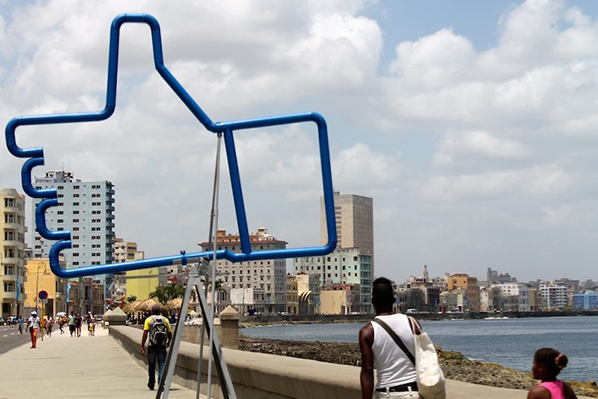
Caribbean, Cuba, Photo Essays
Photo Essay: Cubans Participate (or Don’t) in Havana’s 12th Biennial
May 28, 2015 By Nicki Fleischner
- “Sweet Emotion” a piece by Alexander Guerra for his “Efecto Placebo” (Placebo Effect) series. All photos courtesy of Nicki Fleischner.
- A student walks past “Lemon Way” by Carlos Nicanor.
- Teens snap photos on “Lemon Way” by Carlos Nicanor.
- Kids race down the slide of “Parto a la libertad” (Birth to liberty) by Liudmila López .
- “Parto a la libertad” (Birth to liberty) by Liudmila López.
- “Salvavidas” (Life vests) by Raquel Paiewonsky.
- A girl poses alongside “Secondary Growth Line Extension” by David Opdyke.
- Spectators are offered ice skates and allowed to skate for 20 minutes at “Pista sobre hielo” (Ice Rink) by Duke Riley.
- Kids wait in line for “Pista sobre hielo” “Ice Rink) by Duke Riley.
- Bouncers guard the rink at “Pista sobre hielo” (Ice Rink) by Duke Riley.
- Passerbys test out Carlos Montes de Oca’s installation “Limpiando un rincón del alma” (Cleaning a corner of the soul).
- A man gazes up at “Primavera” (Spring) by Rafael M. San Juan.
- Men fish off the Malecón behind “Tzompantil” by Othón Castañeda.
- People rest and observe at “Who Saw Our Lives?” by Ernesto Javier Fernandez .
- People enjoy the “beach” at “Resaca” (Hangover) by Arles del Río.
- People walk down the Malecón, in front of “Occidente con esteroides” (West with steroids) by Stainless.
- People enter “Proyecto Reality- Cubo Azul” (Reality Project- Blue Cube) by Rachel Valdes.
- Students pose from within “Proyecto-Reality – Cubo Azul” (Reality Project- Blue Cube) by Rachel Valdés, which features a mirror that reflects out onto the ocean.
- “Opuestos” (Opposites) by Kadir López and Jorge Enrique Valdéz.
- “Secreter” (Writing desk) by Lina Leal against the backdrop of Centro Habana.
- Women observe a piece beneath “Malecón N1” by Pilar Rubí.
- Kids play soccer within “Delirios” (Deliriums) by Ernesto García Sánchez.
- Women stroll past “Implosion” by Ewerdt Hilgemann.
- A boy scopes the forks that stick out of “Delicatessen” by Roberto Fabelo.
- A girl poses for a photo atop “Salvación” (Salvation) by Duvier del Dago.
- Snapping photos of “Mis realidades segmentadas” (My segmented realities) by José Parlá.
- A girl plays in “Obstáculos” (Obstacles) by Mounir Fatmi.
- A man enjoys a beer atop another tower that is part of “Salvación” (Salvation) by Duvier del Dago.
- A worker finishes installing “Árbol de Luz” (Tree of Light) by Rafael Villares.
- A woman takes a picture of “Muro de empirismo” (Wall of empiricism) by Dayán Díaz Cuberlo.
- A banner by Han Sungpil located across from the Capital building in Old Havana.
- The entrance of the National Museum of Fine Arts features pieces from the “Wild Noise” exhibition, a collaboration between New York’s Bronx Museum of the Arts and Havana’s National Museum of Fine Arts.
- A museum employee crosses the entranceway to the “Wild Noise” exhibition.
- Banners for the 12th Edition of Cuba’s Biennial line the streetlights of the Malecón.
HAVANA, Cuba — A stream of Cuban children push and jostle one another, fighting for a spot at the front of the line. A mother blows a whistle hanging from her neck, the shrieks puncturing the kids’ giddy screams as she demands order. “If you don’t wait your turn, none of you get to go down the slide!” she says in Spanish. In Havana, playgrounds are scarce and the recreation parks have an entrance fee; a public slide is a hot commodity.
What the children do not know is that the slide is an installation piece for Cuba’s 12th Biennial, an international art festival taking place in Havana until June 22 with the theme “Entre La Idea y La Experienia” (Between Ideas and Experience). The slide, part of a red structure by Cuban artist Liudmila López, is one of several pieces in the “Detrás del Muro” (Behind the Wall) collaboration that runs along Havana’s iconic Malecón, a long stone seawall and boardwalk that has served as Cubans’ go-to spot for strolling, fishing, chatting and lounging since long before the country’s 1959 revolution.
“It is very accessible,” said Yudenis Ramirez a 28-year old woman who took the afternoon off to walk down the Malecón and view all the pieces. “It is incredible that people can interact with the art.”
“Detrás del Muro” is just one set of works on display during the Biennial, which spans dozens of Havana’s galleries, schools and museums with contributions from over 200 artists representing 44 countries. Initiated in 1984, this year the festival has generated excited buzz as an influx of U.S. travelers who have taken advantage of the recent political rapprochement between the United States and Cuba have flocked to Havana to participate.
This year’s Biennial has also garnered critical attention due to the ongoing censorship and temporary Sunday detainment of Cuban artist Tania Bruguera by authorities, with some questioning the validity of an art festival in a country that still restricts freedom of expression.
But beyond political considerations, the Biennial is a celebration of art for a general Cuban public. All along the Malecón, people pose for photos snapped with cellphones, discussing which pieces are their favorites or debating whether “Occidente con Esteroides” (West with Steroids) — a large, colorful piece by a Cuban collective — is in fact supposed to be a cake. Many of the works are interactive; an actual ice-skating rink by U.S.-Irish artist Duke Riley, where individuals can lace up and skate to tunes beneath the glow of a disco ball, has proven to be a fan favorite.
“Ice skating on a 90 degree day in Havana? Now we really know that with imagination anything is possible,” said Tomy Ramirez, waiting his turn in line.
The Malecón, historically a meaningful strip in Havana, has become a site of transition in recent years, with new hotels and restoration projects standing in sharp contrast to some of the city’s most decayed buildings. With works such as Rafael San Juan’s towering sculpture of a woman’s face and Lina Leal’s stack of white wooden furniture added to the mix, Havana’s cityscape becomes part of the art itself. Fisherman stand behind the wooden crates that compose “Tzompantil”, and couples sit and chat, as they do on any other day, regardless of whether there is an art festival or not. Tourists with hulking Canons choose to photograph them as much as the pieces.
As the first Biennial since U.S. President Barack Obama announced a restoration of diplomatic relations with Cuba, a few pieces fittingly reference change on the island. A Facebook “like” thumb hints at the new role the internet and social media has (or has not) taken on as Wi-Fi access reaches Cuba, while in “Entropia” (Entropy) artist René Francisco, who bares a striking resemblance to Obama, dressed as the U.S. president and filmed reactions as he went on a bar crawl through Old Havana. The “Wild Noise” exhibition at the National Museum of Fine Arts is the result of an exchange with the Bronx Museum of the Arts, and is the largest artistic collaboration between the U.S. and Cuba in over 50 years.
The general Cuban public, however, is less likely to explore works beyond the Malecón. Several exclusive events, viewings and parties are available only to those who paid for — or whose travel groups provided them — with an official badge.
At sunset the full throng of Cubans out of school and off work descends upon the Malecón. Groups of friends sit on the chairs that comprise part of the faux-beach of “Resaca” (Hangover), while others line up to take selfies inside “Proyecto Reality-Cubo Azúl” (Reality Project-Blue Cube), which resembles a miniature, blue Apple store. Still in its first week, the “Detrás del Muro” installations are in good condition, new and exciting for those viewing them for the first time. The tour groups may come and go, but for the next month Cubans can take advantage of art that lies somewhere between ideas and experience.
All photos courtesy of Nicki Fleischner for Latin America News Dispatch.
About Nicki Fleischner
Nicki is a Henry MacCracken Fellow at New York University, where she is earning a masters degree in Global Journalism and Latin American Studies. She is from New York City but has lived and traveled throughout the Caribbean, where she studied, wrote and worked as an English and Spanish teacher. She is particularly interested in contemporary culture in Havana, Cuba. Nicki earned her bachelor’s degree in International Literary and Visual Studies at Tufts University.
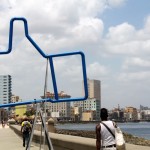
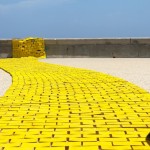
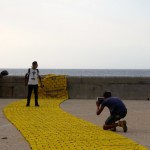
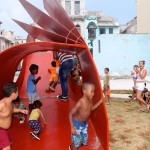
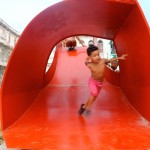
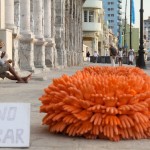
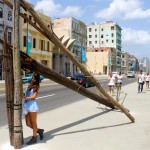
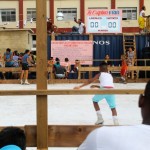
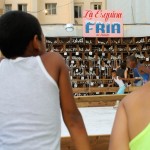
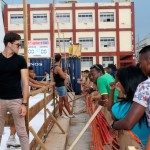
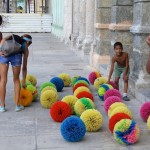
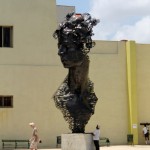
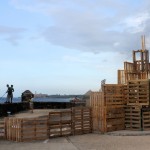
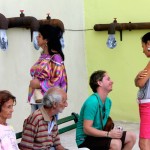
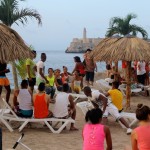

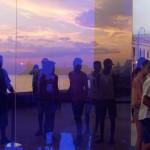
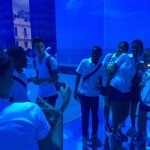
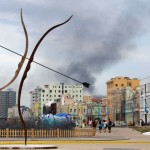
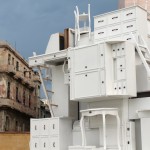
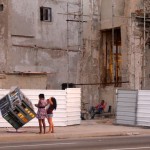
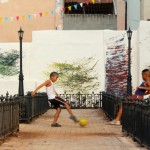
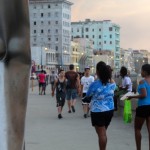
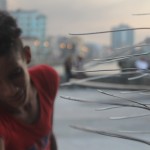
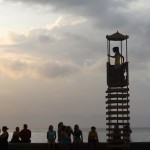
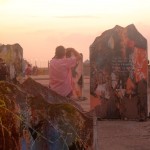

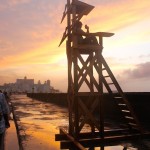
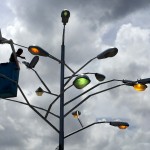
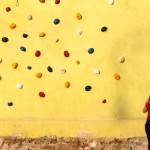
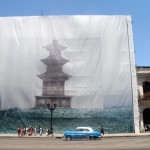
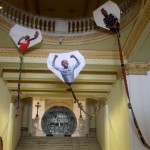
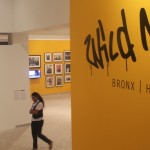
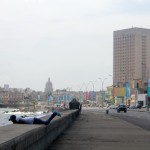
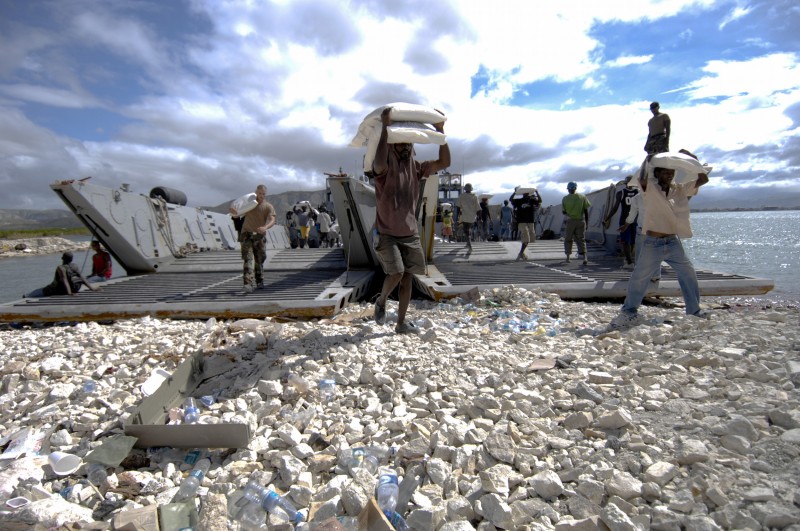
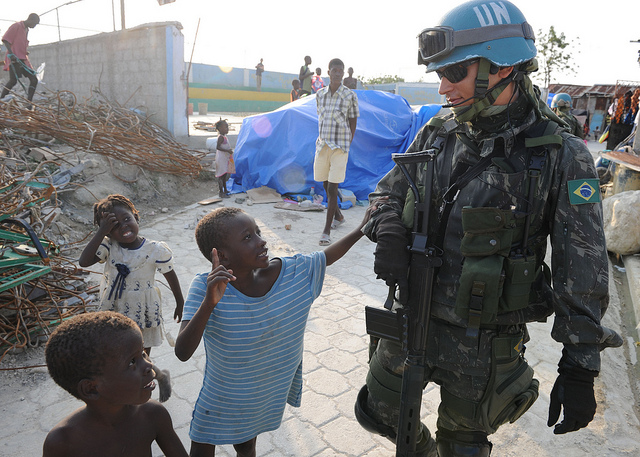
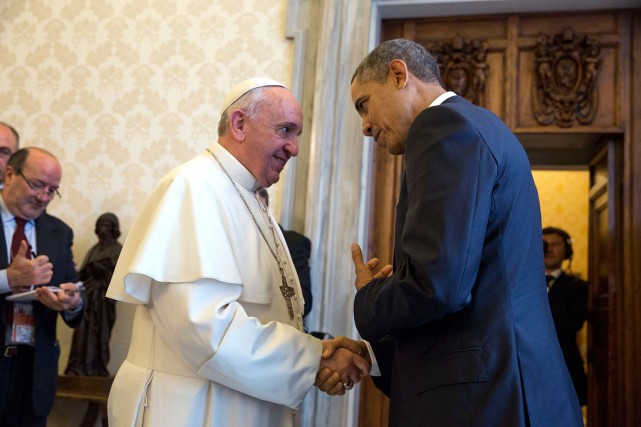
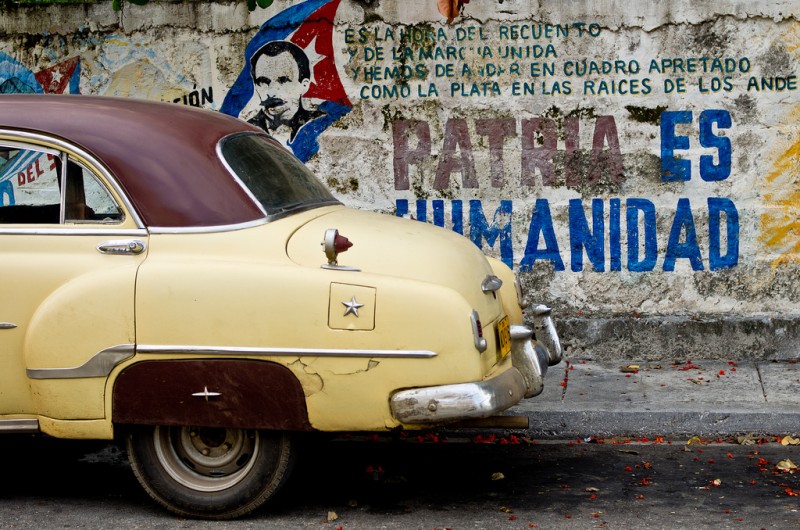
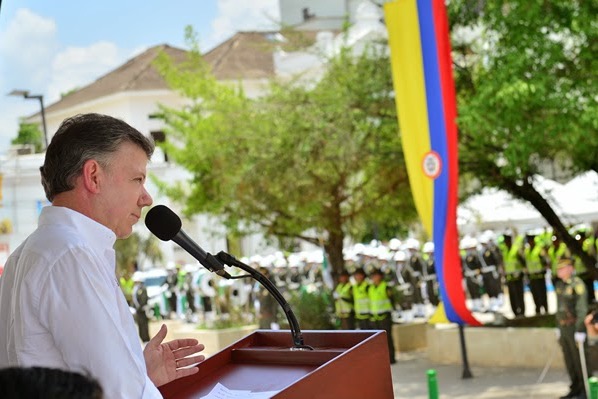
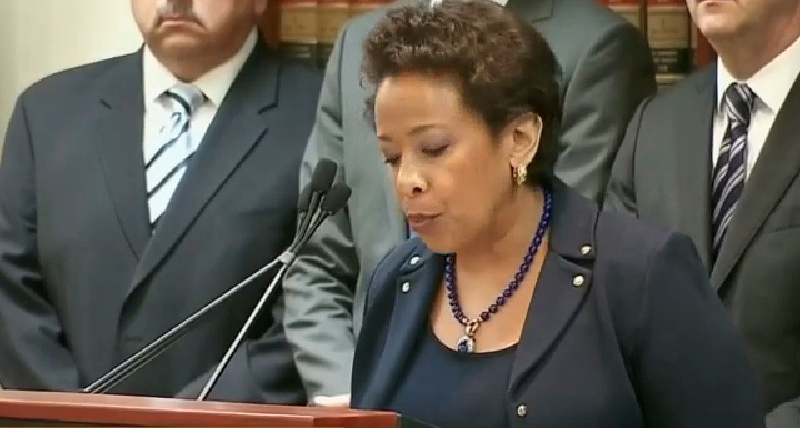
4 Comments
Querida Nicole, estos datos de la Cuba de ahora que has podido observar y que no muchos cubanos del exilio conocemos me ha llenado de esperanza de ver que la cultura y el arte estan sobresaliendo de nuevo . Muchas gracias por ese escrito tan bien hecho y me llena de orgullo que mi querida nieta nos haga ver la realidad de los cambios y adelantos que nuestra Isla esta adquiriendo. Tu abuelo Ito
[…] pulls a fork from the work Delicatessen that is being exhibited on the Havana Malecon during the XII Havana Biennial. Nearby, two neighbors speculate that, at the end of the event, the sand used in Resaca (Hangover) […]
[…] pulls a fork from the work Delicatessen that is being exhibited on the Havana Malecon during the XII Havana Biennial. Nearby, two neighbors speculate that, at the end of the event, the sand used in Resaca (Hangover) […]
[…] Mann nähert sich, zieht eine Gabel aus dem Kunstwerk Delicatessen heraus, das während der 12. Biennale von Havanna entlang an der Uferstraße Malecón ausgestellt wird. Nicht weit davon entfernt spekulieren zwei […]
Comments are closed.